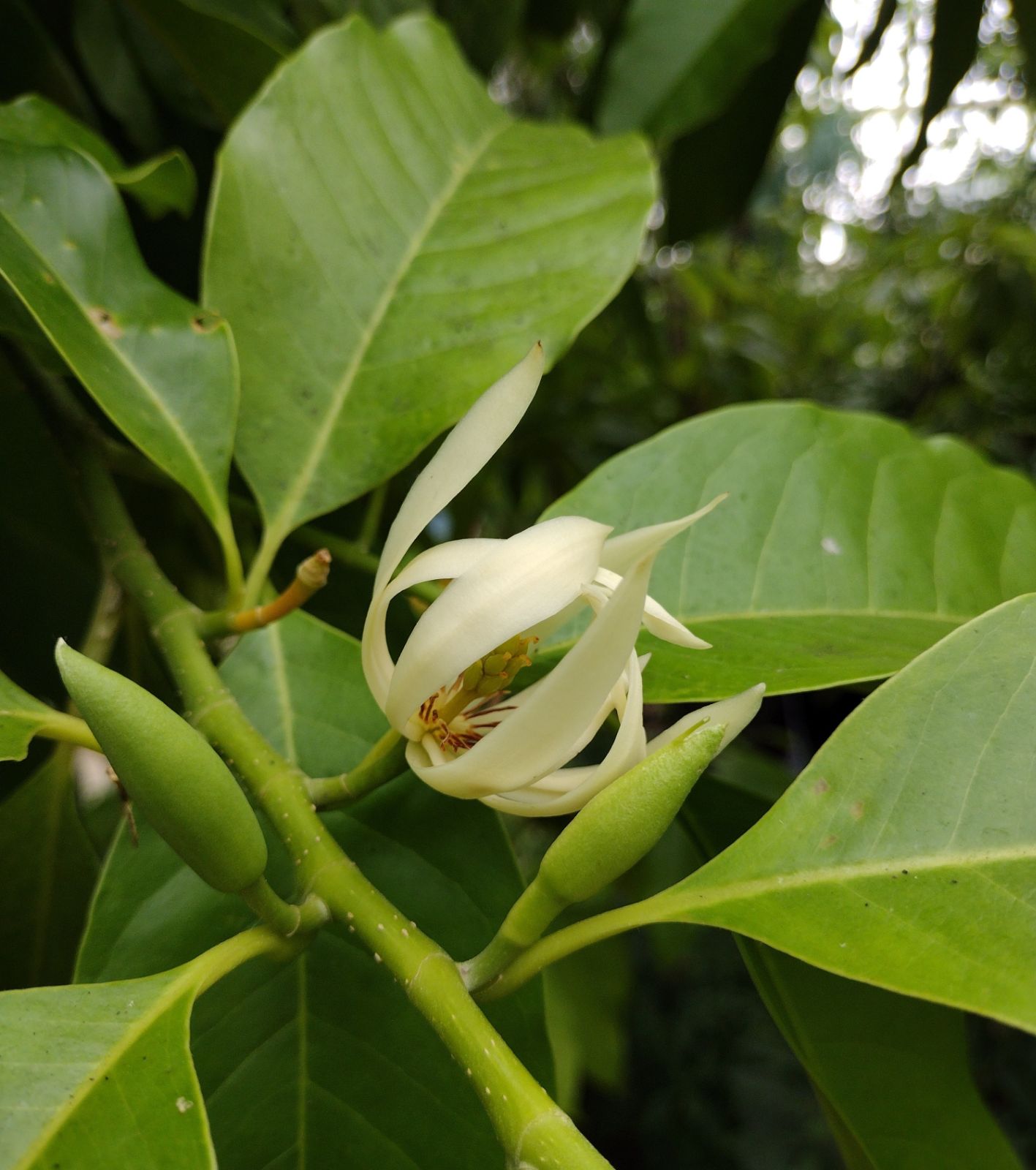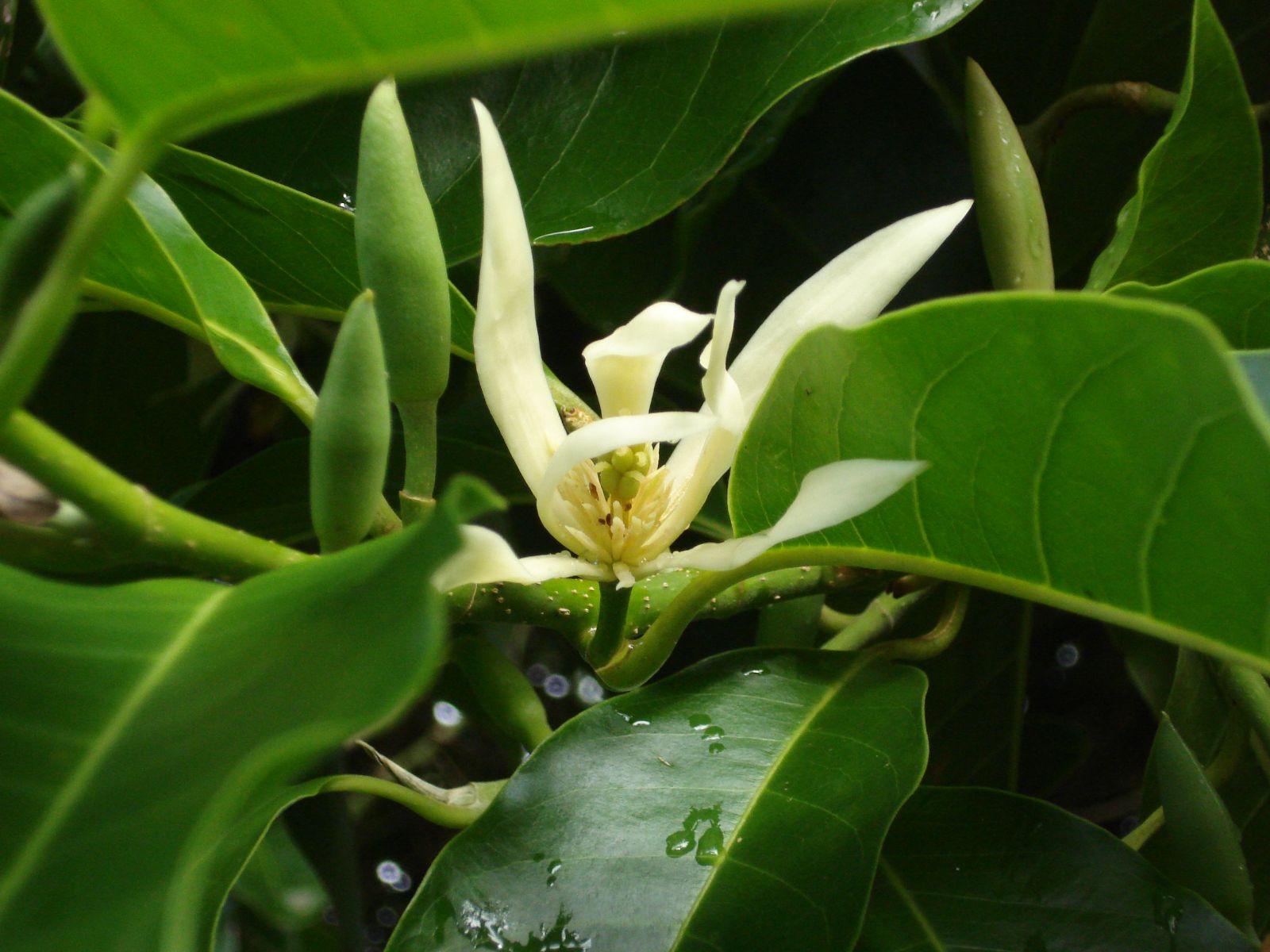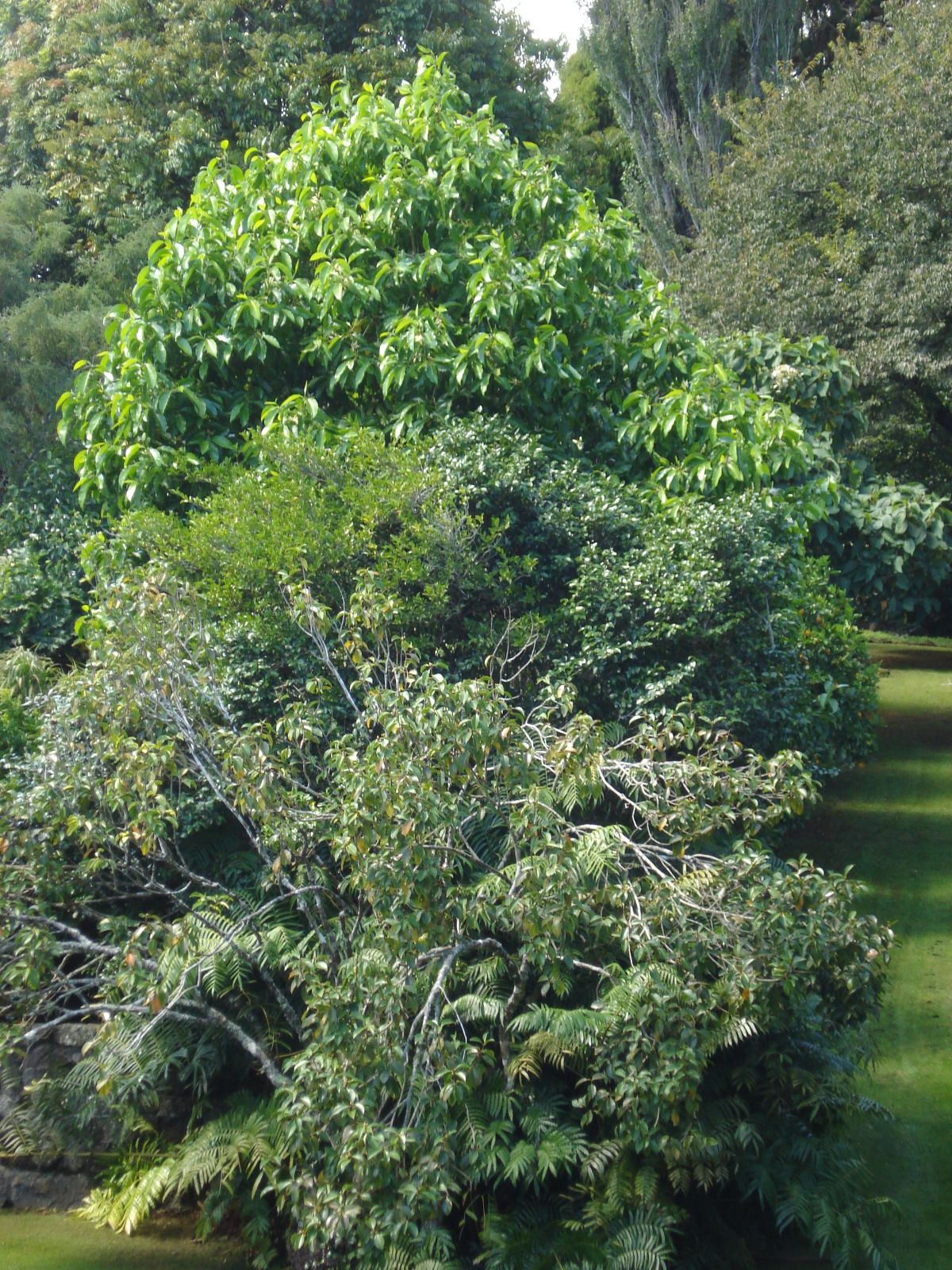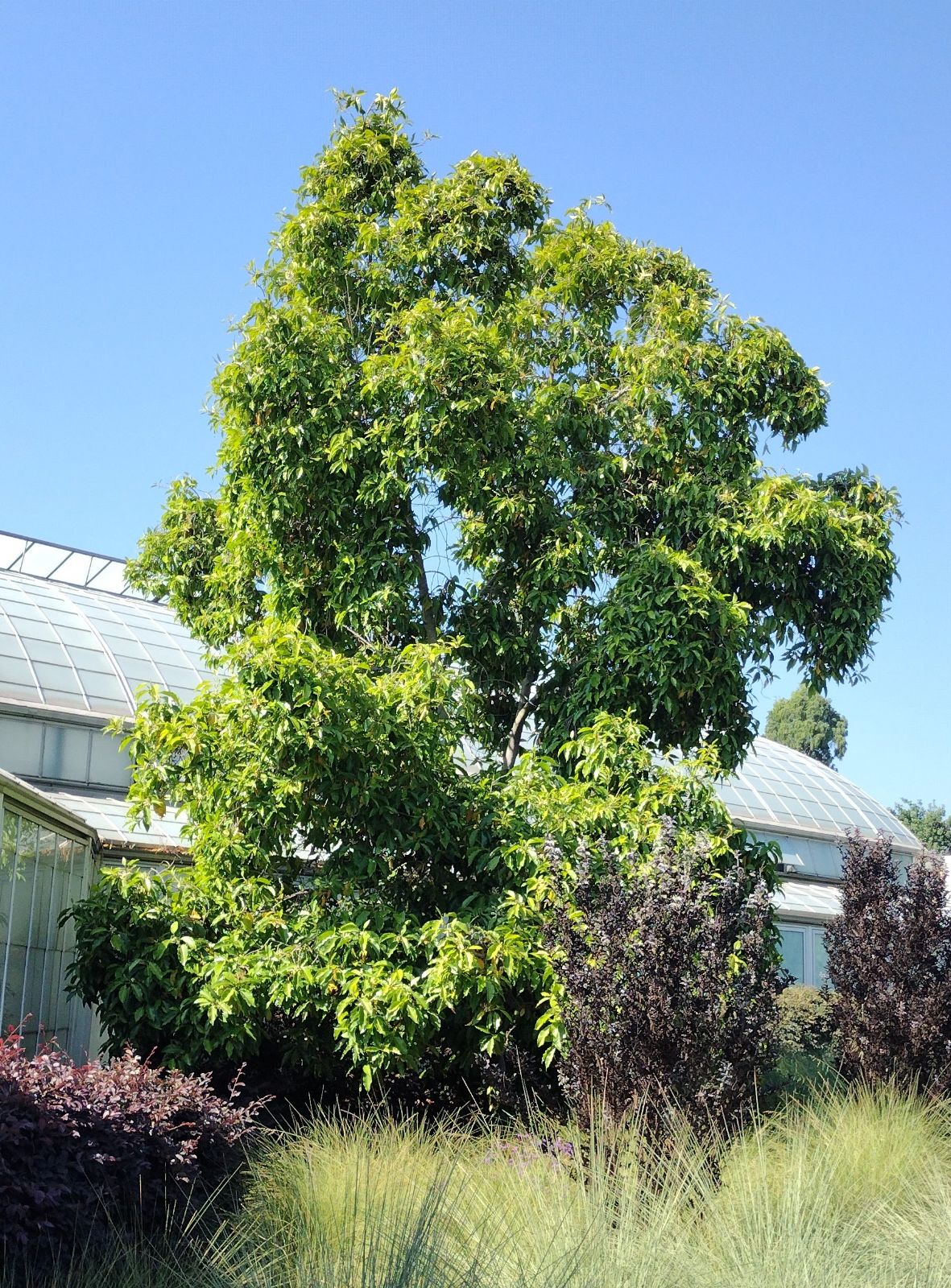Magnolia × alba
Sponsor
Kindly sponsored by
The Roy Overland Charitable Trust

Credits
Julian Sutton (2022)
Recommended citation
Sutton, J. (2022), 'Magnolia × alba' from the website Trees and Shrubs Online (treesandshrubsonline.
Genus
- Magnolia
- probably M. champaca × M. montana
Common Names
- White Champak
- White Champaca
Synonyms
- Michelia × alba DC.
Other taxa in genus
- Magnolia acuminata
- Magnolia amabilis
- Magnolia amoena
- Magnolia aromatica
- Magnolia biondii
- Magnolia × brooklynensis
- Magnolia campbellii
- Magnolia cathcartii
- Magnolia cavaleriei
- Magnolia caveana
- Magnolia champaca
- Magnolia changhungtana
- Magnolia chapensis
- Magnolia compressa
- Magnolia conifera
- Magnolia Cultivars A
- Magnolia Cultivars B
- Magnolia Cultivars C
- Magnolia Cultivars D
- Magnolia Cultivars E
- Magnolia Cultivars F
- Magnolia Cultivars G
- Magnolia Cultivars H–I
- Magnolia Cultivars J
- Magnolia Cultivars K
- Magnolia Cultivars L
- Magnolia Cultivars M
- Magnolia Cultivars N–O
- Magnolia Cultivars P
- Magnolia Cultivars Q–R
- Magnolia Cultivars S
- Magnolia Cultivars T
- Magnolia Cultivars U–V
- Magnolia Cultivars W–Z
- Magnolia cylindrica
- Magnolia dandyi
- Magnolia dawsoniana
- Magnolia de Vos and Kosar hybrids
- Magnolia decidua
- Magnolia delavayi
- Magnolia denudata
- Magnolia doltsopa
- Magnolia duclouxii
- Magnolia ernestii
- Magnolia figo
- Magnolia floribunda
- Magnolia × foggii
- Magnolia fordiana
- Magnolia foveolata
- Magnolia fraseri
- Magnolia fulva
- Magnolia globosa
- Magnolia × gotoburgensis
- Magnolia grandiflora
- Magnolia grandis
- Magnolia Gresham hybrids
- Magnolia guangdongensis
- Magnolia hookeri
- Magnolia insignis
- Magnolia Jury hybrids
- Magnolia × kewensis
- Magnolia kobus
- Magnolia kwangtungensis
- Magnolia laevifolia
- Magnolia lanuginosa
- Magnolia leveilleana
- Magnolia liliiflora
- Magnolia × loebneri
- Magnolia lotungensis
- Magnolia macclurei
- Magnolia macrophylla
- Magnolia martini
- Magnolia maudiae
- Magnolia nitida
- Magnolia obovata
- Magnolia officinalis
- Magnolia opipara
- Magnolia × proctoriana
- Magnolia × pruhoniciana
- Magnolia rostrata
- Magnolia salicifolia
- Magnolia sapaensis
- Magnolia sargentiana
- Magnolia sieboldii
- Magnolia sinensis
- Magnolia sinica
- Magnolia sinostellata
- Magnolia × soulangeana
- Magnolia sprengeri
- Magnolia stellata
- Magnolia tamaulipana
- Magnolia × thomsoniana
- Magnolia tripetala
- Magnolia × veitchii
- Magnolia virginiana
- Magnolia × wieseneri
- Magnolia wilsonii
- Magnolia xinganensis
- Magnolia yunnanensis
- Magnolia yuyuanensis
- Magnolia zenii
Tree to 30 m, 0.8 m dbh. Bark grey. Branchlets green with dense, appressed grey pubescence, though soon almost glabrous. Leaves evergreen, thin and leathery, 10–35 × 4–11 cm, elliptic to obovate, upper surface glabrous, lower surface with sparse pubescence, 6–12 secondary veins on each side of the midrib, margins entire, apex acuminate; petiole 1.5–5 cm long, pubescent or glabrous; stipules with similar pubescence as on branchlets. Flowers on axillary shoots; shoots pubescent and with two to three evenly distributed scars. Flowers numerous, white and scented; tepals 10–12, lanceolate, 3–5.5 × 0.3–0.5 cm; stamens yellowish brown; gynoecium stipitate with ~10 pubescent carpels. Fruits 10–13 cm long; most carpels abort, but those that ripen are red, 1.2–1.8 cm long, hairy and beaked. Flowering April to September, fruiting October to November (China). (Chen & Nooteboom 1993; Liu et al. 2004).
USDA Hardiness Zone 10-11
RHS Hardiness Rating H2
Conservation status Not evaluated (NE)
Magnolia × alba is probably the result of a cross between M. champaca and M. montana (Blume) Figlar (Chen & Nooteboom 1993). It does not occur in the wild, but is cultivated in the Chinese provinces of Fujian, Guangdong, Guangxi, Hainan and Yunnan, and throughout subtropical and tropical southeast Asia.
Along with its yellow flowered parent M. champaca, Magnolia × alba is prized above all else for its fragrance, and its flowers are widely used in Asia for ceremonial gifts and temple offerings as well as for household and personal decoration. Its popularity has travelled with Asian immigrants to the United States where it is grown as a street and yard tree in coastal California as far North as the Bay Area (Ritter 2012). It is, however, a large tropical tree and distinctly tender. In Europe it is only known as a glasshouse plant and will probably stay that way.




